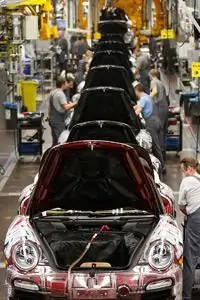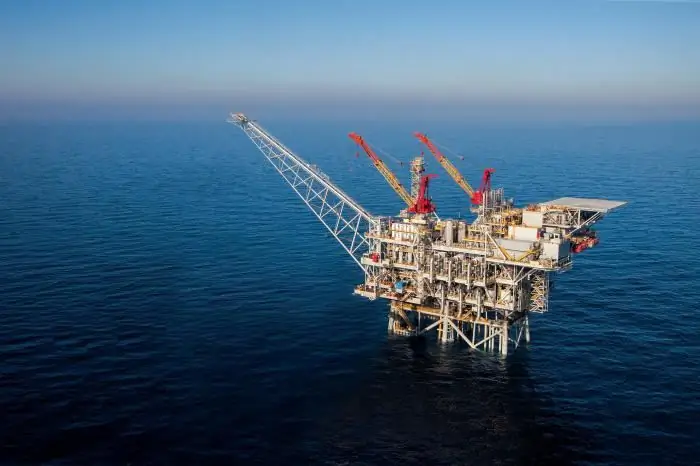2025 Author: Howard Calhoun | [email protected]. Last modified: 2025-01-24 13:10:45
Unfortunately, industrial accidents are not uncommon. The most common cause of their occurrence is non-compliance with safety regulations and improper organization of production. Therefore, danger zones are the first thing to pay attention to in order to prevent accidents.

Concept
In order to understand the location, calculation of boundaries and graphical / constructive allocation of hazardous areas, you should first familiarize yourself with the terminology. A danger zone is an area of the workspace where there is a high risk of harm to the he alth and life of workers.
They are on any production area, regardless of its specifics. The nature of the work affects only the size and type of hazardous areas. Therefore, when organizing work, pay close attention to potentially dangerous areas, take measures to ensure safety in this space.
Views
Because a danger zone is a place where special safety regulations apply, you need todeal with its varieties. The classification is formed on the basis of factors affecting the safety of workers. They are of two types:
- permanent;
- potential.
This classification of factors was developed and established by the Ministry of He alth of the Russian Federation. In addition, there is a list of GOSTs that regulate the size and working conditions in the unsafe area of working areas. The employer is responsible for their failure to comply.

Areas with constant exposure to risk factors
Hazardous work area should be guarded to attract the attention of employees. The established norms for the designation of dangerous space depend on its type.
Areas with constant influence of hazards are:
- next to non-insulated conductive parts of electrical installations;
- next to unfenced drops over 1.3m high;
- with the concentration of harmful substances, noise, vibration and other harmful factors, above the established norms.
This list refers to the areas of construction and repair services, the production of building materials, the manufacture of building structures, structures and products. It is spelled out in building codes and regulations. You can read more about the full text of the document in SNiP 12-03-2001.
Potentially unsafe areas
Temporary factors affect sites that pose a potential threat. Therefore, they are subject to more loyal requirements for the installation of fences. To areas withpotential risks include:
- space near buildings and structures under construction (under construction);
- plots on the floors of buildings and structures in one grip, over which construction and installation work is carried out;
- areas for vehicles and other movable equipment;
- areas where goods are moved by cranes.
This list also applies to the construction industry. In places with permanent and potentially hazardous production factors, temporary and permanent zones of the organization's employees cannot be located.

Calculation of the danger zone during the operation of a crane
Since the rotation of the crane occurs in a circle, the radius of the danger zone is taken as the desired value in the calculations. Signal fences will be installed along it, preventing the presence of workers at the time of construction work.
For calculations, you need to know three values:
- arrow turning radius (Rc);
- total construction length (k);
- radius of departure (ΔR).
The turning radius of the boom depends on the technical characteristics of the crane, the total length of the structure depends on the object under construction. To find the departure radius, it is enough to use tables with standard indicators.
The formula for calculating the danger zone is as follows:
Ro=Rc+0, 5k + ΔR.
Based onfrom the data obtained, it is possible to determine the exact circumference of the danger zone, taking the place of installation of the crane as its center. This area should be highlighted with signal fences that comply with GOST 12.4.059.-89.
Formula and procedure for calculating the danger zone when working at height
By definition of the danger zone, it is clear that it does not have to be located directly at the site of construction and installation work. When working at height, objects that can accidentally fall from it are especially dangerous. Therefore, a section of the horizontal projection of the working area is fenced under the place of high- altitude work.
Step by step guide to identifying the danger zone when working at height:
- Determine the length and width of the workspace.
- Find the dimensions of the horizontal projection of the area under the workspace.
- Determine the distance (height) of the working area.
- Calculate safety distance.
- Find the boundaries of the danger zone.
To carry out the necessary calculations, two formulas are required: the formula for finding the safety distance and the boundaries of the danger zone. All other data is found using the appropriate measurements.
Safety distance formula (b):
b=0, 3N, where H is the height of the working area.
Danger zone boundary formula:
K1=S+b;
K2=D+b, Where W, D are the dimensions of the horizontal projection (length and width).
Isolation of the danger zone
For workers to payattention, avoided potentially dangerous space, it must be allocated, in accordance with the current GOSTs. As already mentioned, the nature of the markup depends on the factors that create hazardous conditions at work.

Zones with a constant influence of risk factors are highlighted by safety protective fences. They should be installed along the entire perimeter of the enclosed space.
As for areas with potentially acting factors, there are two ways to single out a dangerous zone: signal fences or signs. A warning sign is a rectangular or square white plate with the words "Danger Zone" in red. But both signs and fences must comply with the established GOST. Hazardous area fences are installed only after an accurate calculation of the boundaries of the unsafe area.
Marking in warehouses
As mentioned earlier, a danger zone is a space where there is a real threat to the he alth and life of workers. Such sites are at any manufacturing enterprise, regardless of its field of activity. Therefore, they should be protected not only at the construction site.

Warehouses are also places where workers can often be injured. Most often this is due to the instability of boxes, containers, packages stored in specially designated places. Of course, with proper loading and storage, the risk of injury in the warehouse is low. However, due to carelessness or inattentionemployees and people responsible for compliance with safety rules, irreparable harm to he alth may be caused to employees. Therefore, a hazardous industrial zone in warehouses is marked with appropriate markings.
How are hazardous areas marked in warehouses?
Special markings are designed to focus the attention of workers in potentially unsafe areas. Its application should be carried out only by repair or construction organizations. Do-it-yourself marking is not recommended.
Signal markup can be represented as:
- marking lines;
- floor signs "Danger Zone";
- arrows and other additional signal elements.
When applying special markings, repair and construction companies use brushes, paints with a special composition, stencils of letters, signs and other elements. The warehouse owner has the right to independently determine the method of marking.
Marking methods:
- self-leveling floors that differ in color from the main working area;
- installation of colored markings;
- applying signal markings.
As a rule, 4 colors are used for marking: red, yellow, green and blue. The allocation of potentially unsafe areas is a mandatory requirement prescribed in the safety regulations. Therefore, the owner of the warehouse is responsible for the absence or application of markings that do not correspond to the boundaries of the danger zone.

Processmarking. Label Benefits
If the owner of the warehouse is a private person, it is important that the entrepreneur follows the complete workflow for designing and marking. If a separate labor protection service is provided at the production site, then this process belongs to its direct duties. It includes several steps:
- Determining the location and type of potential threat.
- Coordination of the project in authorized organizations.
- Installation of markings in accordance with current standards and GOSTs.
To accurately determine the location and type of potential hazard, a company can turn to the services of professionals who will conduct a thorough audit of the premises, correctly assessing all possible risks. Without this, it is impossible to start work in the danger zone, otherwise, in case of injury to a warehouse worker, his owner will not only suffer huge losses, but also risk being left without a license.

Label benefits:
- designation of all potentially hazardous areas;
- the ability to apply markings to highlight passages;
- safe organization of the movement of goods within the warehouse;
- protection against collision with motor vehicles.
You can apply markings not only to indicate hazardous areas, but also to graphically highlight workplaces, paths for pedestrians and paths for vehicles, floor storage cells and other things. A well-designed room plan significantly reduces the riskoccurrence of any traumatic situation at work.
Recommended:
Modern production. The structure of modern production. Problems of modern production

Developed industry and a high level of the country's economy are key factors influencing the we alth and well-being of its population. Such a state has great economic opportunities and potential. A significant component of the economy of many countries is the production
Roofer is a dangerous profession

Construction professions are popular and in demand at all times. Each type of work in the construction and decoration of buildings and structures requires certain skills and abilities. The profession of a roofer is in demand in the construction of any industrial or residential facility. Roof installation, replacement and restoration works are strategically important in construction
Gas production. Gas production methods. Gas production in Russia

Natural gas is formed by mixing various gases in the earth's crust. In most cases, the depth of occurrence ranges from several hundred meters to a couple of kilometers. It is worth noting that gas can form at high temperatures and pressures. In this case, there is no access of oxygen to the place. To date, gas production has been implemented in several ways, each of which we will consider in this article. But let's talk about everything in order
Dangerous goods: definition, classification and transportation rules

There are many substances that can be classified as dangerous goods. When transporting them, as well as items containing them, certain rules and safety measures must be observed
Potassium nitrate is a dangerous but useful chemical compound

Potassium nitrate (or potassium nitrate) is a nitrogen-potassium complex fertilizer used to feed various plants. It is the most important source of potassium for any crops, and it can be used in all phases of their development. This fertilizer is presented in the form of a fine crystalline powder of a white-grayish color. It is completely soluble in water, it does not contain Na and Cl s alts, as well as heavy metals

